
AlphaLISA Human CXCL9/MIG Detection Kit, 5,000 Assay Points
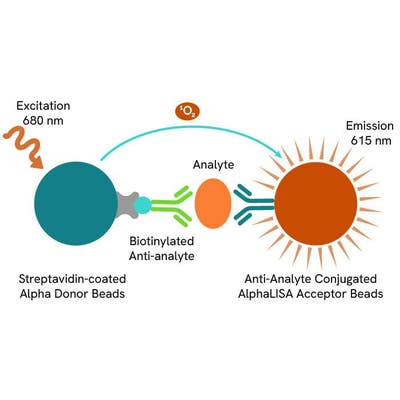

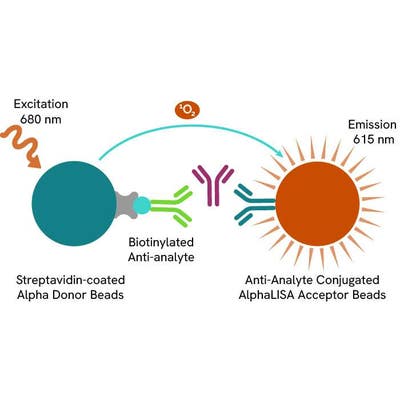 View All
View All
AlphaLISA Human CXCL9/MIG Detection Kit, 5,000 Assay Points
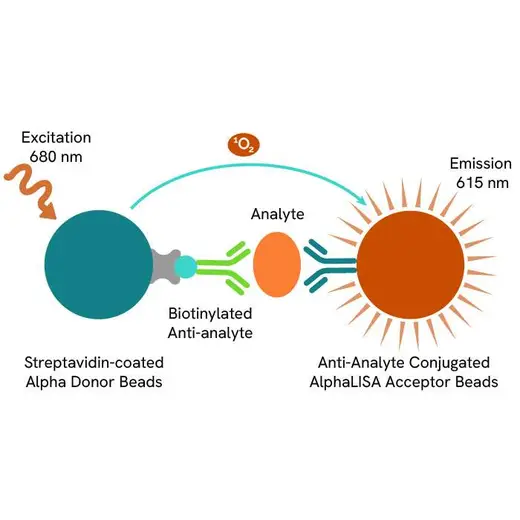

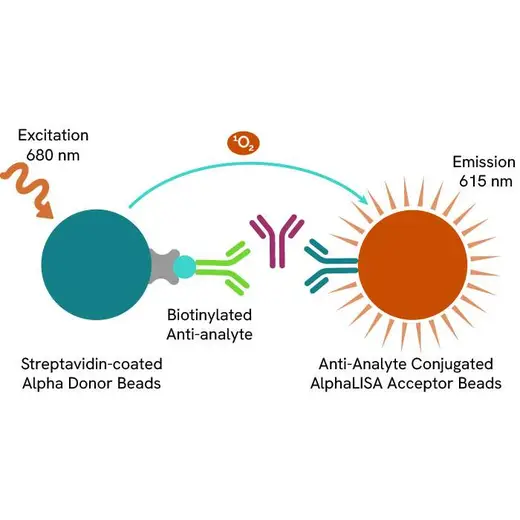




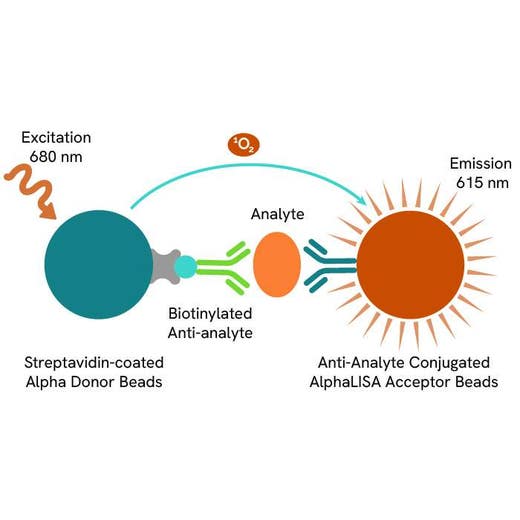

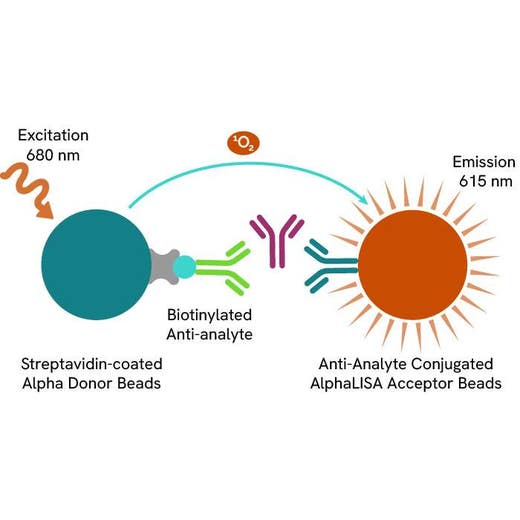




The AlphaLISA™ Human C-X-C Motif Chemokine 9 / Monokine Induced by Gamma Interferon (CXCL9 / MIG) Detection Kit is designed for detection and quantitation of human CXCL9/MIG in serum, buffered solution or cell culture medium in a homogeneous (no-wash steps, no separation steps) assay.
| Feature | Specification |
|---|---|
| Application | Protein Quantification |
| Dynamic Range | 1.6 - 100,000 pg/mL |
| Limit of Detection | 1.6 pg/mL |
| Sample Volume | 5 µL |
The AlphaLISA™ Human C-X-C Motif Chemokine 9 / Monokine Induced by Gamma Interferon (CXCL9 / MIG) Detection Kit is designed for detection and quantitation of human CXCL9/MIG in serum, buffered solution or cell culture medium in a homogeneous (no-wash steps, no separation steps) assay.







AlphaLISA Human CXCL9/MIG Detection Kit, 5,000 Assay Points







AlphaLISA Human CXCL9/MIG Detection Kit, 5,000 Assay Points







Product information
Overview
Formats:
- Our 500 assay point kit allows you to run 500 wells in 96-well or 384-well format, using a 50 µL reaction volume (5 µL of sample).
- Our 5,000 assay point kit allows you to run 5,000 wells in 96-well or 384-well format, using a 50 µL reaction volume (5 µL of sample).
Features:
- No-wash steps, no separation steps
- ELISA alternative technology
- Sensitive detection
- Broad sample compatibility
- Small sample volume
- Results in less than 3 hours
- Half the time of an ELISA assay
C-X-C Motif Chemokine 9 (CXCL9), previously called MIG, is a 14 kDa protein belonging to the intercrine alpha (chemokine CXC) family. Its induction is enhanced by TNFa in dermal fibroblasts and vein endothelial cells. The synthesis of CXCL9 is specifically induced in macrophages, monocytes, neutrophils, APC, B cells, and eosinophils by IFN? and mediated via the JAK-STAT signaling pathway. The main function of this chemokine is the recruitment of leukocytes to sites of infection and inflammation. Some studies have shown that CXCL9 is active against Gram-negative and Gram-positive bacteria. CXCL9 may play a role as a mediator of T-cell recruitment and activation in some diseases like psoriasis and pulmonary disease. CXCL9 is expressed in allogeneic skin grafts several days before completion of rejection.
AlphaLISA technology allows the detection of molecules of interest in a no-wash, highly sensitive, quantitative assay. In an AlphaLISA assay, a biotinylated anti-analyte antibody binds to the Streptavidin-coated Donor beads while another anti-analyte antibody is conjugated to AlphaLISA Acceptor beads. In the presence of the analyte, the beads come into close proximity. The excitation of the Donor beads causes the release of singlet oxygen molecules that triggers a cascade of energy transfer in the Acceptor beads, resulting in a sharp peak of light emission at 615 nm.
Specifications
| Application |
Protein Quantification
|
|---|---|
| Automation Compatible |
Yes
|
| Brand |
AlphaLISA
|
| Detection Modality |
Alpha
|
| Dynamic Range |
1.6 - 100,000 pg/mL
|
| Limit of Detection |
1.6 pg/mL
|
| Product Group |
Kit
|
| Sample Volume |
5 µL
|
| Shipping Conditions |
Shipped in Blue Ice
|
| Target |
CXCL9
|
| Target Class |
Cytokines
|
| Target Species |
Human
|
| Technology |
Alpha
|
| Therapeutic Area |
Inflammation
|
| Unit Size |
5,000 Assay Points
|
Image gallery






AlphaLISA Human CXCL9/MIG Detection Kit, 5,000 Assay Points






AlphaLISA Human CXCL9/MIG Detection Kit, 5,000 Assay Points






Video gallery

AlphaLISA Human CXCL9/MIG Detection Kit, 5,000 Assay Points

AlphaLISA Human CXCL9/MIG Detection Kit, 5,000 Assay Points

Resources
Are you looking for resources, click on the resource type to explore further.
Cytokines play a vital role in both innate and adaptive immunity and are known for their ability to exert diverse functions on...
Advance your autoimmune disease research and benefit from Revvity broad offering of reagent technologies


How can we help you?
We are here to answer your questions.






























